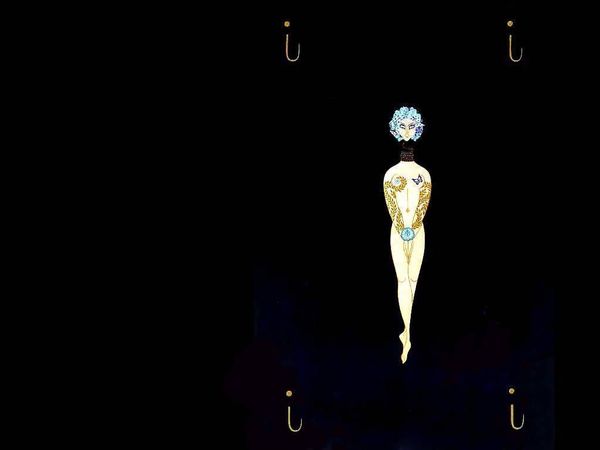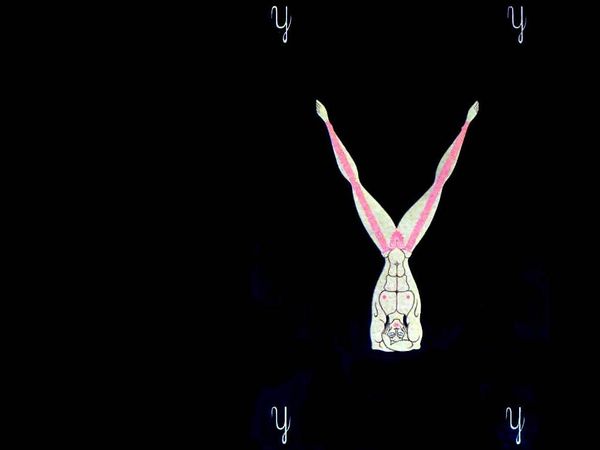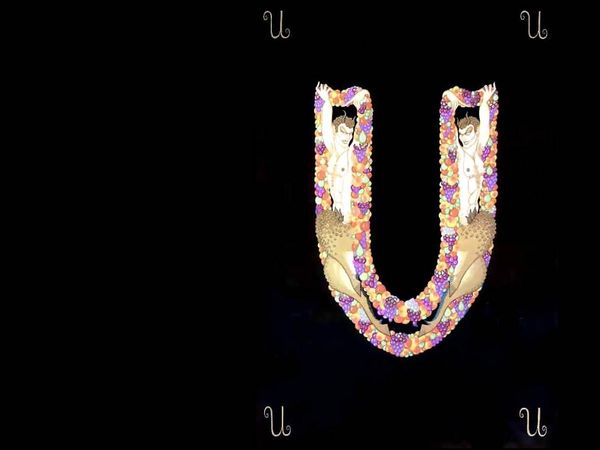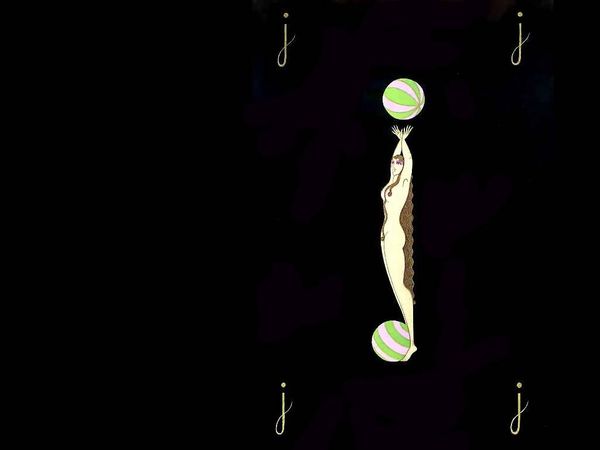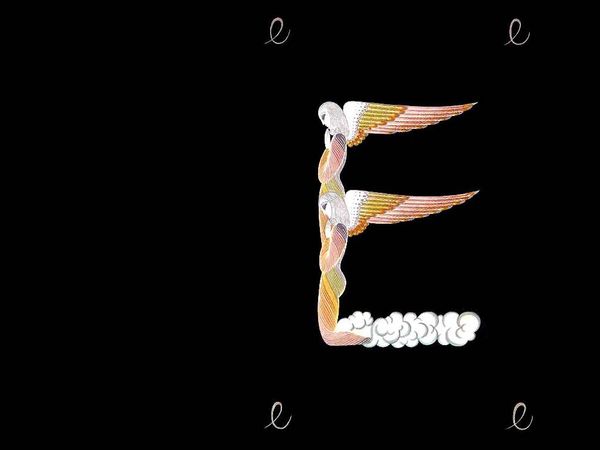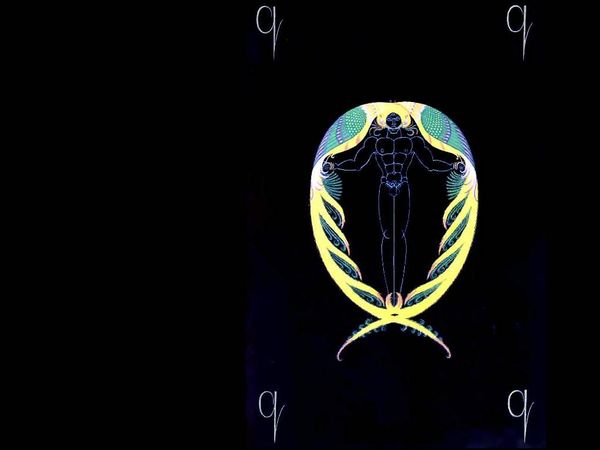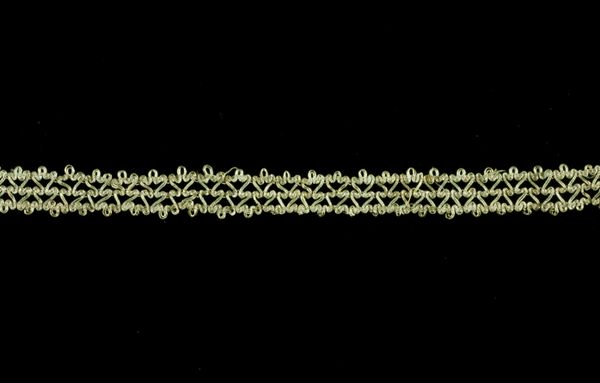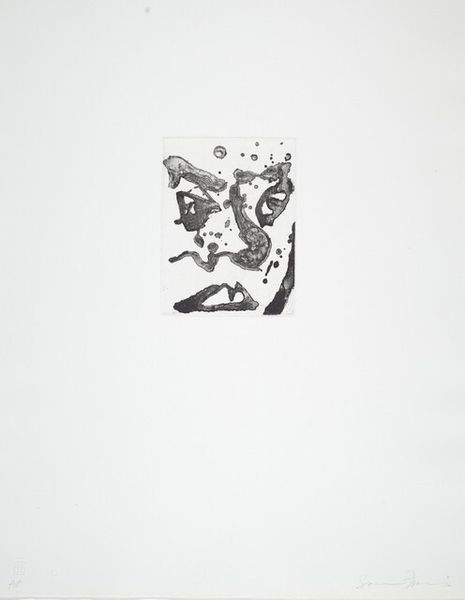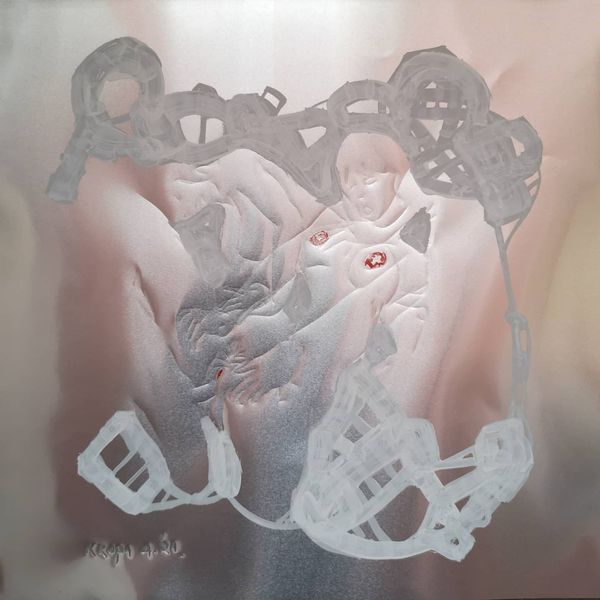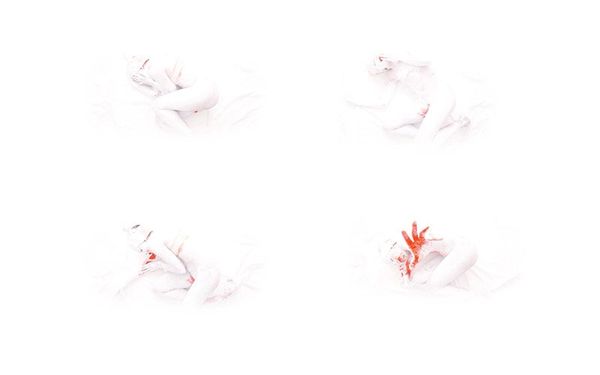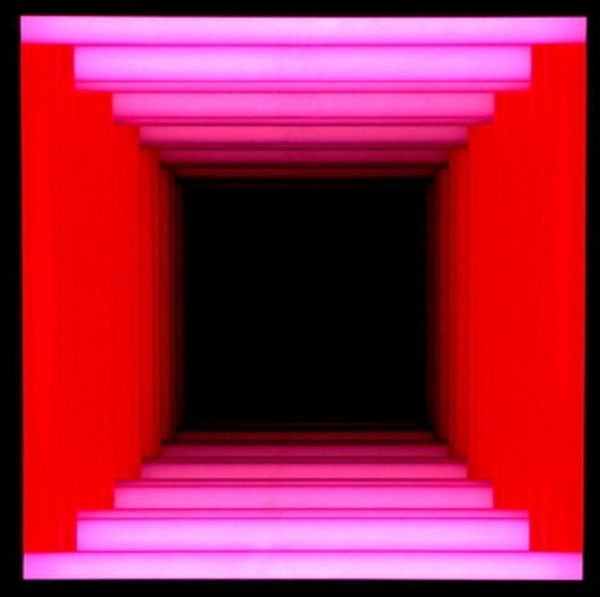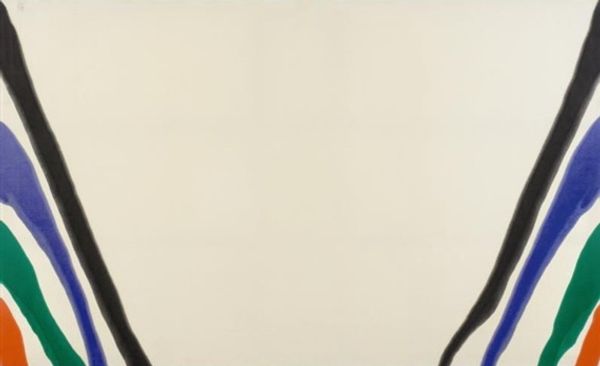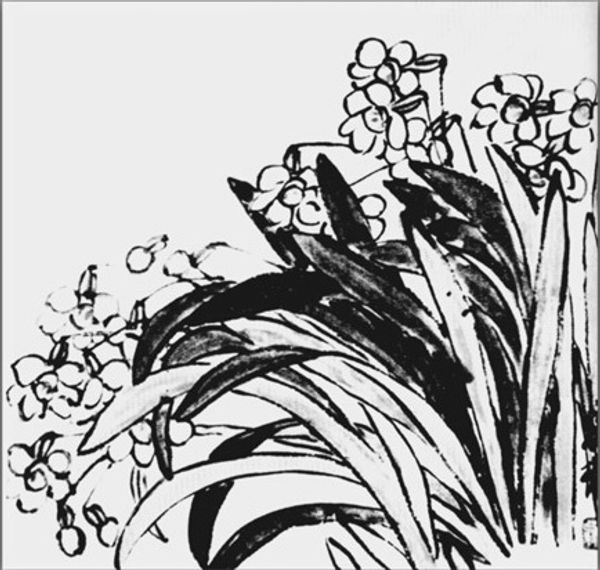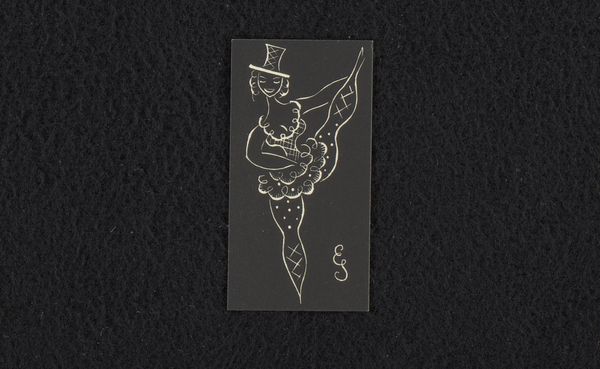
#
art-deco
#
figuration
#
decorative-art
#
nude
#
decorative art
Copyright: Erte,Fair Use
Curator: We’re looking at “Alphabet V” by Erte, from his celebrated alphabet series. Editor: It has such a striking sense of decadence against that stark black backdrop. I’m immediately thinking about performativity and masquerade. Curator: Let's begin with the visual construction. The composition is essentially two nude female figures mirrored to create the 'V' form. Note the floral ornamentation, contrasting against their almost geometric, stylized bodies. Editor: I see those floral arrangements as less ornamentation, and more a strategic use of adornment as a way to simultaneously reveal and conceal the women. Think of Josephine Baker's banana skirt, a very pointed choice given the racist stereotyping of Black women. These flowers could function in similar ways, complicating the act of looking. Curator: That’s interesting. I tend to read Erte through a lens of pure aesthetic pleasure, where the focus is primarily on line, color, and the dynamic interplay of form. Do you see no emphasis on form and line in this artwork? Editor: No, it is undeniable. What I want to argue is that by emphasizing an image’s aesthetics while ignoring historical, sociopolitical forces, we risk silencing the critical voices embedded within the artwork. This piece whispers of anxieties and coded commentary about femininity and spectacle. Curator: Perhaps, but in Erte's decorative oeuvre, such elements may be more of a conscious aesthetic choice rather than social commentary. This is decorative art. We're meant to revel in beauty. Editor: The decorative itself has never been apolitical. Art Deco, in particular, offered women new subjectivities through visual culture. In a changing, globalizing, and industrializing world, visual codes spoke to individual aspirations. To ignore them flattens a vibrant complexity. Curator: Perhaps. My attention always reverts to the craftsmanship, to how meticulously he’s arranged each visual element in the plane. Editor: It reminds us to look at who has been historically rendered invisible and listen carefully to their artistic contributions and unique forms of agency.
Comments
No comments
Be the first to comment and join the conversation on the ultimate creative platform.
